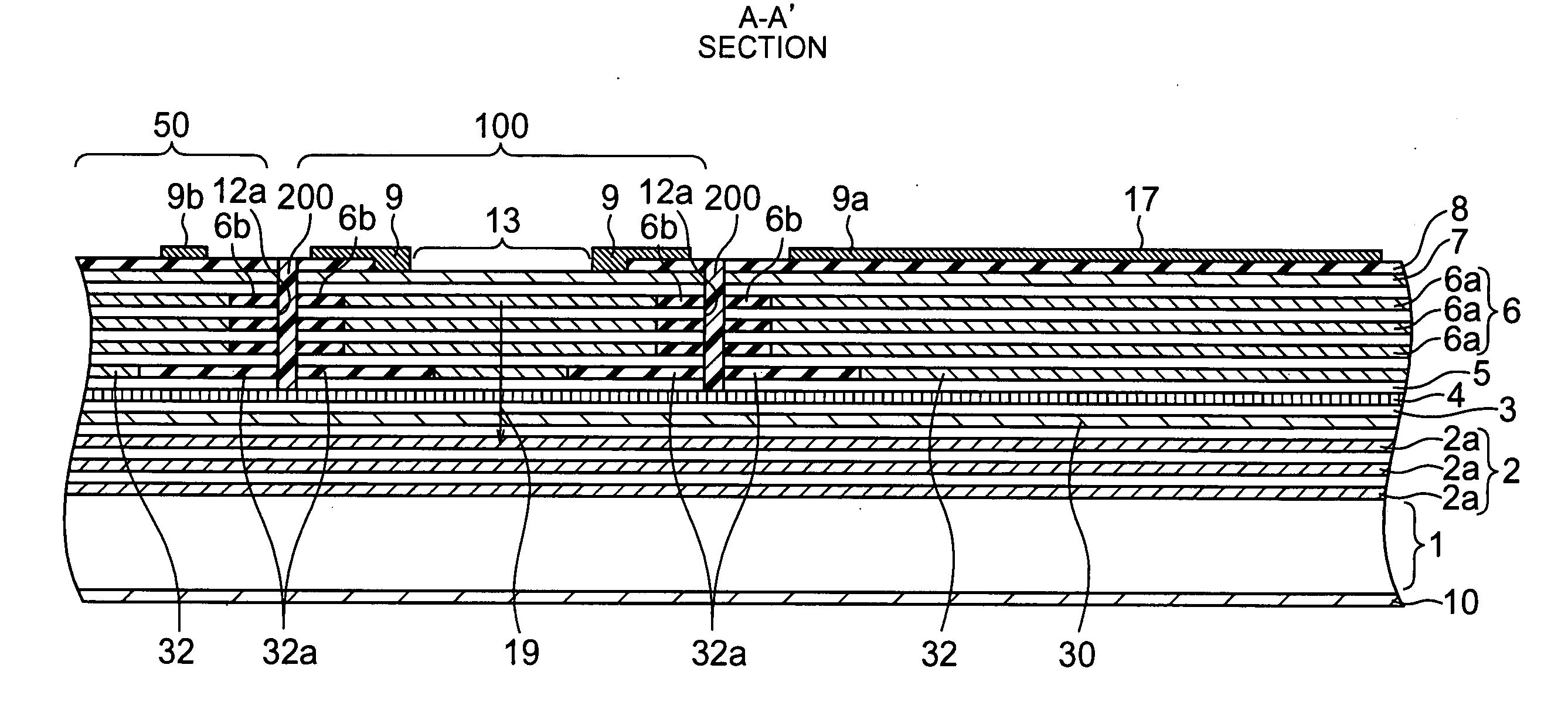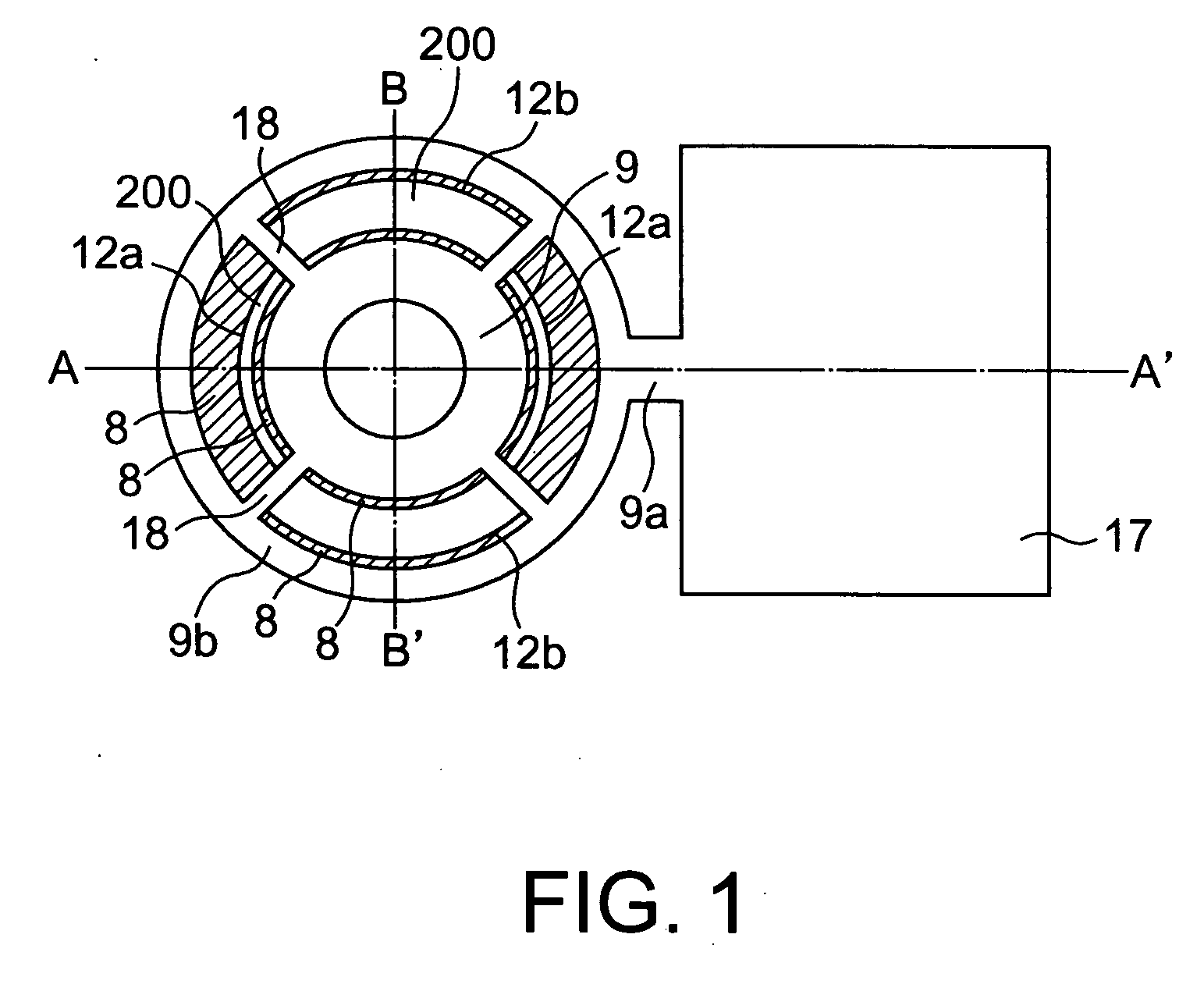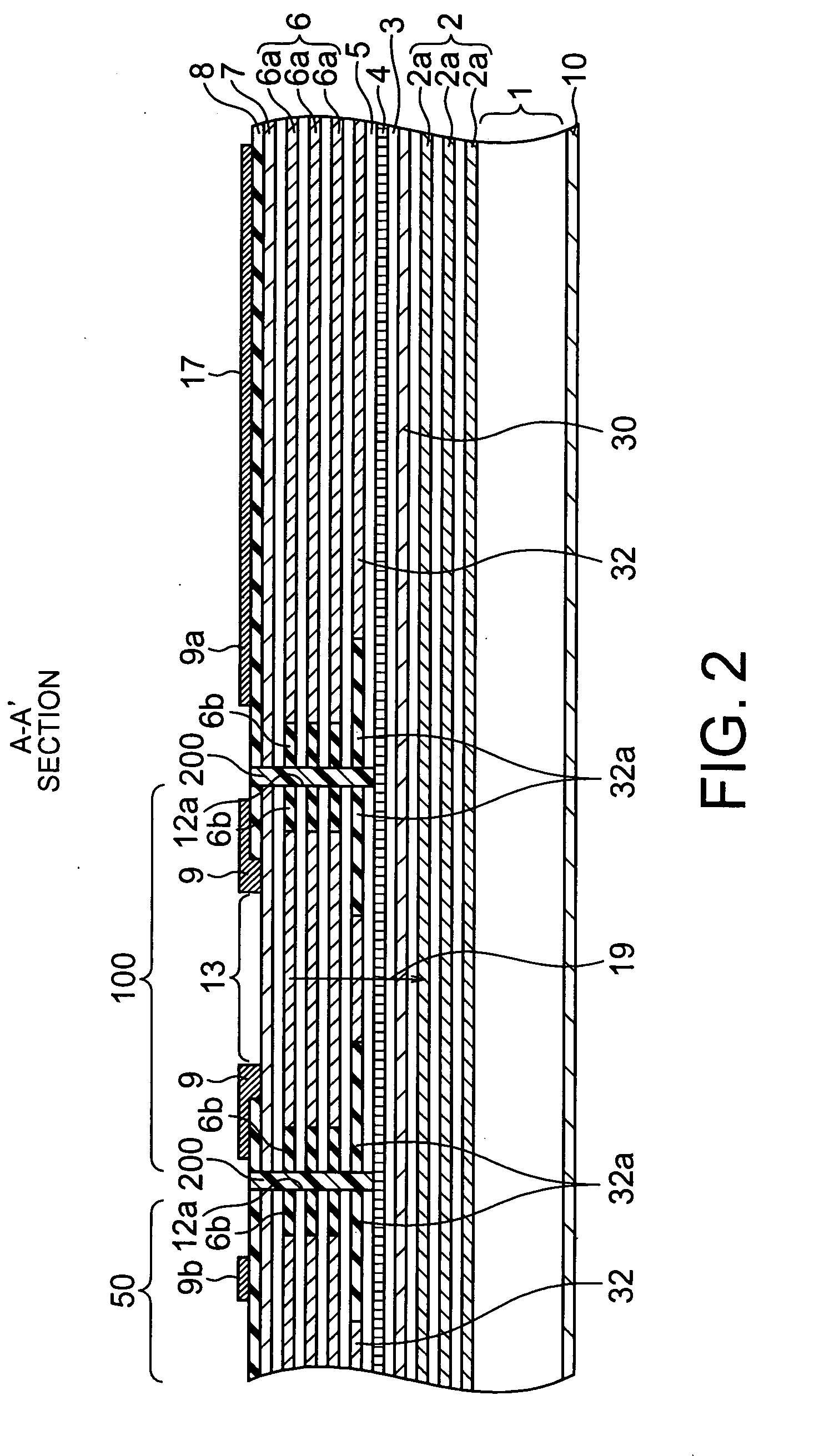Vertical cavity surface emitting laser diode
a laser diode and vertical cavity technology, applied in semiconductor lasers, optical resonator shape and construction, laser details, etc., can solve the problems of increased error or limitation in transmission bands, difficult to make control of polarization direction of vertical cavity surface emitting laser diodes, and difficult to perform, etc., to achieve high performance, controllability of polarization mode and/or mass productivity
- Summary
- Abstract
- Description
- Claims
- Application Information
AI Technical Summary
Benefits of technology
Problems solved by technology
Method used
Image
Examples
first embodiment
[0084] FIGS. 1 to 9 are illustrative views showing a structure of a vertical cavity surface emitting laser diode according to a first embodiment of the present invention. FIG. 1 is a plan view of the vertical cavity surface emitting laser diode, FIG. 2 is a sectional view of the vertical cavity surface emitting laser diode taken along A-A′ shown in FIG. 1, and FIG. 3 is a sectional view of the vertical cavity surface emitting laser diode taken along B-B′ shown in FIG. 1. FIG. 4 is a view showing a shape of an oxidized region 32a of an upper to-be-oxidized layer 32 obtained when the vertical cavity surface emitting laser diode has been cut at a height 26 thereof (see FIG. 5), FIG. 5 is a sectional view of the vertical cavity surface emitting laser diode taken along line A-A′ shown in FIG. 4, and FIG. 6 is a sectional view of the vertical cavity surface emitting laser diode taken along line B-B′ shown in FIG. 4. FIG. 7 is a view showing a shape of an oxidized layer of a lower to-be-ox...
example
[0110] Next, the method for manufacturing a vertical cavity surface emitting laser diode according to the first embodiment will be specifically explained as examples.
[0111] First, an n-type semiconductor multi-layer film reflecting mirror 2, a to-be-oxidized layer 30 for forming a current confinement portion, a cladding layer 3, a semiconductor active layer 4, a cladding layer 5, a to-be-oxidized layer 32 for forming the current confinement portion, a p-type semiconductor multi-layer film reflecting mirror 6, and a contact layer 7 were sequentially grown on a cleaned n-type GaAs substrate 1 with plane orientation (100) plane having 3-inch square and a thickness of 400 μm using a MOCVD (metal organic chemical vapor deposition) apparatus.
[0112] Here, assuming that a structure where the semiconductor multi-layer film reflecting mirrors 2 and 6 were disposed above and below an optical cavity constituted of the semiconductor active layer 4, and the cladding layers 3 and 5 was a basic s...
first modification
(First Modification)
[0127] Next, a vertical cavity surface emitting laser diode according to a first modification of the first embodiment will be explained with reference to FIGS. 10 to 12. FIG. 10 is a view showing a shape of an oxidized region 32a of an upper to-be-oxidized layer 32 of a vertical cavity surface emitting laser diode according to a first modification of the first embodiment obtained when the vertical cavity surface emitting laser diode has been cut at a height 26 (see FIG. 11) thereof, FIG. 11 is a sectional view of the vertical cavity surface emitting laser diode according to the first modification, taken along line A-A′ shown in FIG. 10, and FIG. 12 is a sectional view of the vertical cavity surface emitting laser diode according to the first modification, taken along line B-B′ shown in FIG. 10.
[0128] The vertical cavity surface emitting laser diode according to the first modification has such a constitution that the lower to-be-oxidized layer 30 is removed, size...
PUM
 Login to View More
Login to View More Abstract
Description
Claims
Application Information
 Login to View More
Login to View More - R&D
- Intellectual Property
- Life Sciences
- Materials
- Tech Scout
- Unparalleled Data Quality
- Higher Quality Content
- 60% Fewer Hallucinations
Browse by: Latest US Patents, China's latest patents, Technical Efficacy Thesaurus, Application Domain, Technology Topic, Popular Technical Reports.
© 2025 PatSnap. All rights reserved.Legal|Privacy policy|Modern Slavery Act Transparency Statement|Sitemap|About US| Contact US: help@patsnap.com



